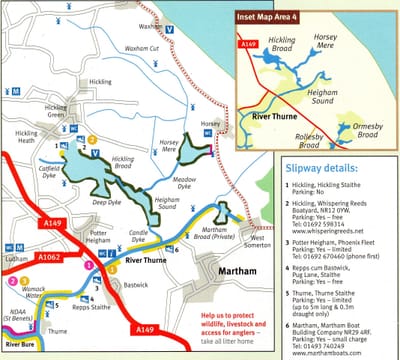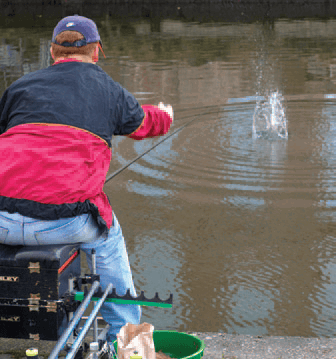Fishing on the Broads


Besides the abundant shoals of roach and slab-sided bream, good numbers of perch and specimen pike are amongst the species traditionally associated with Broads angling and can be caught throughout the freshwater areas. Rudd have become increasingly rare throughout the country, but are still commonly caught in various areas of the Broads, especially the Upper Thurne.
Fishing on the River Thurne
Situated on the quieter stretch of the River Thurne, upriver from Potter Heigham bridge, the Little House on the River is a fisherman’s paradise. The 60 ft river frontage allows up to four anglers onto the river and the ‘fisherman’s shed’ with bait fridge provides the necessary secure storage for all your tackle. A separate outside WC is convenient when fishing, and a side entry porch is useful for storage of outside clothing. The opposite bank is free of buildings, giving you your own private stretch of river.
Hiring a dayboat, preferably electric, enables you to access the quiet reedy backwaters of the Upper Thurne, which offers superb summer fishing prospects. Bumper catches of bream from Deep Dyke, between Heigham Sound and Hickling Broad, specimen rudd from the reedy margins of the system and large tench from the Thurne in the vicinity of the Martham Broads have all added to this area’s reputation as an angler’s paradise. Of all the rich landscapes of Broadland, the Upper Thurne system is probably the one which captures people’s image of the Broads most accurately.
Fishing from a small dinghy in this landscape of reedbeds, stark drainage pumps and distant sand dunes is a lasting memory for many that visit the Broads. Marsh harriers soar over the beds of sedge and reed, which provide thatch for so many local dwellings. Great crested grebes dive for the small roach and rudd that abound in the shallow bays of Hickling Broad, Heigham Sound and Horsey Mere. Coots dive and feed on the rich reedbeds that give cover for young fish. In winter, the sight of a bittern can add so much to a day’s pike fishing. Away from the boat channels in shallow reed-lined bays, rudd can be caught alongside the reeds as can large tench and bream. The angler can find true solitude in such bays.
Please note, if you are 12 years old or over you must have a valid Environment Agency Rod Licence – available online and from Post Offices. For telephone sales call: 0870 1662 662.
A copy of the Anglian Region Fisheries Byelaws can be found at: www.environment-agency.gov.uk
The annual coarse fish closed season is 15 March to 15 June INCLUSIVE each year, and applies to the Broads and all its rivers.
The information in this section is adapted from the Environment Agency publication ‘Angle on the Broads’ (http://www.environmentdata.org/archive/ealit:219). Each fish type requires various angling techniques and baits employed for their capture; this publication describes in some detail the six main species likely to be encountered along with tips which may aid the visiting angler put together some worthwhile catches.